The Recipe for a Perfect Veggie Garden

A garden in its early stages, protected by our 4′ cedar lattice fence.
It’s often been said that people benefit from having three hobbies: one for fitness, one for making money, and one for creativity. In recent years, people have rediscovered gardening, which is one hobby that can actually do all three! As the public grows more health-conscious and eco-friendly, fresh, locally-grown vegetables from farmer’s markets and community gardens have become the standard in kitchens all over. Growing a vegetable garden from seeds or from sprouted plants is a rewarding way to get outdoors with your family and add some color and beauty to your yard and your table.
Why has the DIY movement grown to include produce too? It’s tasty and rewarding!
You probably already know the taste benefits of fresh, seasonal produce. The hothouse tomatoes that are shipped to supermarkets from across the country, for example, are a far cry from the locally-grown tomatoes you find at farmer’s markets. However, many gardening enthusiasts prefer the taste of their own homegrown vegetables, especially if they have concerns about pesticides or genetically modified crops. Converting some of your lawn into a garden gives you the opportunity to grow those delicious veggies at home, allowing you to skip the farmer’s market—and giving you the peace of mind that comes with knowing exactly where your food comes from and how it was grown.
The edible garden movement is one of the biggest backyard trends for 2015, and it has expanded rapidly in homes across the country. If you want to see evidence of this skyrocketing trend, all you have to do is look in any home and garden publication or turn on any home improvement television show to see that modern homeowners don’t just want their gardens to be beautiful but functional as well. Edible landscapes incorporate herbs, fruits, and vegetables for a beautiful garden that yields crops bursting with color and flavor. Many homeowners find that they love getting outside and getting their hands dirty at every stage of the process, from planning to harvesting. However, you might be a little lost without a map. Never fear – we’ve developed a tried-and-true recipe for a great vegetable garden.
Ingredients for your veggie garden
- 1 plan
- Gardening tools,
- Fertilizer, as needed
- Aerated soil
- Pesticide
- Seeds and/or plants
- A fence
Creating the perfect edible garden: Step by step
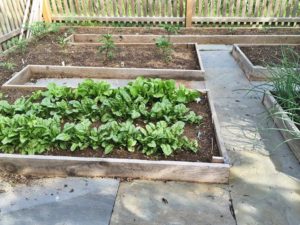
Spinach and lettuce growing in the Fence Authority’s recently planted garden at our West Chester, PA location!
Before you even think about touching that shovel, it’s important to plan. Make a list of the products you buy most often and determine which vegetables you might like to grow. Find out which crops grow best in your area. Examine the lighting, soil, water, and space needs of the crops you’d like to grow, and plan accordingly for season and temperature. Many home garden mainstays—like broccoli, carrots, grapes, blueberries, lettuce, kale, onions, radishes, and peppers—make it easy for beginners. These crops need full sunlight and are largely pest resistant.
1. Draw a diagram incorporating your plants’ space and lighting needs. Talk to an experienced gardener or the staff at a gardening center if you need help planning.
2. Pick a few herbs to plant around and among your vegetables and fruits. Herbs like lavender, lemon verbena, chives, basil, rosemary, oregano, and parsley help keep the bugs at bay and can flavor up any dish once harvested.
3. Gather your tools. Many homeowners have standards like shovels, hoes, and spades in the garage or the tool shed. However, gardening requires a few more specialized tools. Garden forks, hand weeders, and soaking hoses will all make your time in the garden much more pleasant. Baskets or wheelbarrows can make moving mulch, soil, fertilizer, or harvested crops much easier. People who would prefer not to get dirt under their fingernails might benefit from gardening gloves.
4. Enrich your soil. While your lawn is probably adequate for grass, remember that you’ll only get as good as you give. Vegetables need a variety of nutrients such as nitrogen that you may need to introduce into your soil with fertilizer. Many home gardeners opt for organic fertilizer. By “organic,” we mean “manure.” (Gardening is definitely one of the messier hobbies.) In addition to providing a wealth of nutrients, manure helps your soil retain moisture, prevents it from compacting, and enables plants to absorb nutrients more efficiently. Most gardeners spread a mixture of manure and compost or peat moss over their soil. If you’d prefer to use a store-bought fertilizer, you should test your soil first with a home testing kit to see which nutrients your soil lacks. This will help you determine the right nitrogen-phosphate-potash ratio to purchase.
5. Break up your soil. This will mix in your fertilizer and aerate the soil, creating a homier environment for your plants. Hand tillers, pitchforks, and other hand tools work fine for breaking up the soil, but if you have a larger garden plot, you might consider using a rototiller. These tools are gas-powered and make tilling much faster and easier. However, they can be a little pricey. Many home improvement stores rent rototillers to customers, which may be a more cost-effective solution for the home gardener. Some garden experts recommend tilling your soil once a year, although some gardeners till twice a year.
6. Find a pesticide. It’s an unfortunate fact of life that if you’ve got a garden, you’ve got bugs. No matter how much TLC you give your plants, bugs will munch away at their leaves and fruits until you have nothing left. Some bugs like bees, ladybugs, and beetles are good for your garden, so spreading pesticides when these species are less active may keep the good guys healthy while ensuring the bad guys don’t come back. Some pesticides, even organic ones, can burn your plants. Talk to the staff at your garden supply store to identify which pesticides are best for your garden and how to use them without harming your plants and important insects like bees.
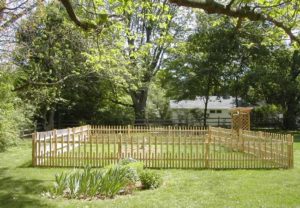
Before this garden could get started, we encased it in a custom 4′ cedar spindle fence.
7. Fence in your garden. Bugs aren’t the only pests gardeners have to worry about. Some of the cutest critters like rabbits, deer, and dogs can be a gardener’s most persistent nemeses, ravaging your beautiful leafy vegetables and digging up your root vegetables without mercy. The best way to prevent four-legged pests from making a meal of all your hard work is to make sure they never see it at all. Many gardening experts recommend installing a garden fence before planting. If you allow rabbits or deer to become accustomed to the beautifully-plotted food source that is your garden, it may be difficult to get them to move on elsewhere. We love the natural look of cedar for garden fences as well as the modern look of low maintenance materials like aluminum.
8. Buy your seeds or plants. While seeds are generally much less expensive than sprouted plants, some crops are difficult to get started with seeds, and all seeds take time to sprout. If you would prefer to get started more quickly, buying sprouted plants might be for you.
9. Get planting! Remember to take into consideration your plants’ depth needs, and make sure to follow the diagram you developed to accommodate each plants’ spacing needs. Last minute changes, even small ones, can be detrimental to the affected plants or even your whole garden. Markers can help you remember which plants are which. This is important because different plants have different watering and light needs. Follow the directions on your plants or seed packets for watering and harvesting.
Although we doubt this recipe will find its way into your recipe file, we hope you’ll refer to it again and again in your first season with your new home garden. Like most recipes, it seems complicated, but the journey and the destination are well worth it! Soon enough, you’ll have the ingredients for a real recipe!
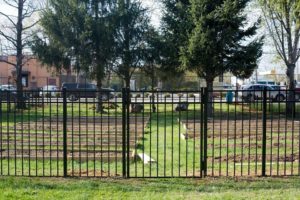
An aluminum ActiveYards fence we installed at the Melton Center Community Garden in West Chester, PA.
Once you’ve mastered your gardening skills, consider paying it forward by participating in your local community garden. We love gardening and even recently began our own plot of spinach and lettuce, but The Fence Authority mainly participates in the way we know best: adding fences, of course! Our major contribution is to protect gardens from the critters that like to munch on them, and we find few things more rewarding than donating our time and labor to these spaces.
You can check out our Pinterest for more images of garden fences we’ve installed as well as some gardens we love! We’ll also keep you updated on the progress of our spinach and lettuce garden.
Do you have some insight into the particulars of using pesticides? Suggestions for fertilizing? A special repellent that keeps furry friends out of the garden? Your thoughts on the perfect garden fence? Share them in the comments!
To order fence parts or schedule professional installation,
call 800-431-4303 or contact us online!
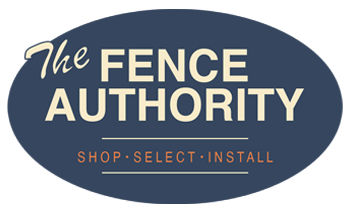

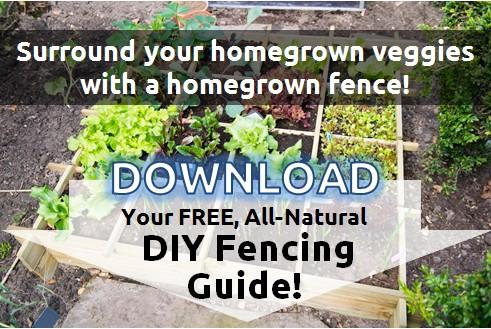
1 Trackback